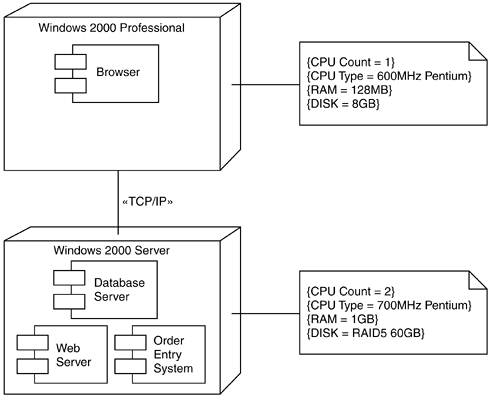Preparing the Preliminary Architecture
We now know a lot more about Remulak Productions' requirements, as well as some of its technology needs and desires. The last artifact we need to begin, but not finish, before completing the Inception phase is the framework of the preliminary architecture. The project vision template contains some high-level architecture placeholders, but the primary resting place of the project architecture is the Software Architecture Document (SAD) of the Unified Process. Officially, the SAD isn't produced until the Elaboration phase, but I choose to begin fleshing it out with elements that we already know about when we're in the Inception phase. Table 4-5 lists the technology components of the architecture.
To depict this architecture better, we use two different UML diagrams, which we combine to show both the software realization (component diagram) and hardware hosts (deployment diagram). Remember that this is a preliminary architecture. It is a snapshot based on what is known at this juncture of the project. Figure 4-5 shows the preliminary architecture model rendered in a hybrid UML component in the deployment diagram format.
Figure 4-5. Preliminary architecture with UML component and deployment diagrams

For scalability, the architecture must allow various layers of the application to run on a processor other than the client's. In addition, we will want to take advantage of Enterprise JavaBeans to coordinate all of the various resources of the application. We will explore these and other technical considerations as the application evolves.
